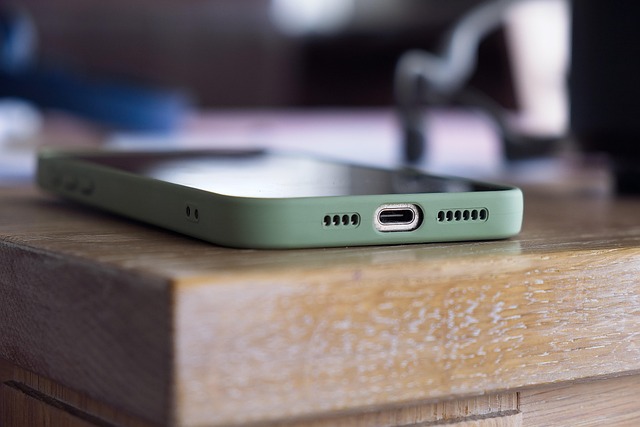IoT-driven mobile access control systems transform building security and user experiences. They enable remote access management, real-time monitoring, and data analytics for enhanced safety and convenience. By replacing keys with smartphones, optimizing space utilization, and predicting maintenance needs, these systems revolutionize smart building operations. Integration requires assessing current infrastructure, selecting compatible IoT devices, and implementing software solutions for optimal performance and security. The future of buildings includes IoT-enhanced mobile access control for smarter, safer environments.
“The Internet of Things (IoT) is transforming the way we interact with smart buildings, and at the forefront of this revolution is IoT-enabled access control. This article explores how mobile access control systems are enhancing security measures in modern facilities. From understanding the fundamentals of IoT integration to uncovering future trends, we delve into the benefits and implementation strategies for security managers. Discover how these innovative solutions are making buildings safer and more efficient.”
Understanding IoT and Its Impact on Access Control
The Internet of Things (IoT) is transforming various sectors, and access control is no exception. IoT-enabled access control for smart buildings leverages connected devices, sensors, and software to create more efficient, secure, and flexible environments. By integrating mobile access control systems, building managers can monitor and manage entry points remotely, enhancing security measures while simplifying user experiences.
This technology allows for real-time data collection and analysis, enabling proactive decision-making. For instance, IoT devices can detect unusual patterns or unauthorized access attempts, triggering alerts that help prevent potential security breaches. Additionally, mobile access control systems enable users to gain entry with just a tap on their smartphones, eliminating the need for physical keys or cards. This seamless integration contributes to more streamlined operations and improved user satisfaction in smart buildings.
Benefits of Mobile Access Control Systems in Smart Buildings
Mobile access control systems offer a seamless and secure entry experience for occupants in smart buildings. One of the primary benefits is the elimination of physical keys or cards, allowing users to gain entry through their smartphones or other mobile devices. This not only enhances convenience but also improves security as access credentials can be remotely managed and revoked, preventing unauthorized access.
Additionally, these systems provide real-time monitoring and analytics, enabling building managers to track occupancy patterns, optimize space utilization, and even predict maintenance needs. The data collected from mobile access control can offer valuable insights into building operations, leading to more efficient energy management, enhanced safety measures, and improved overall tenant satisfaction.
Implementing IoT: A Step-by-Step Guide for Security Managers
Implementing Internet of Things (IoT)-enabled access control in smart buildings is a strategic move for security managers, offering enhanced safety and efficiency. Here’s a step-by-step guide to ensure a successful transition.
1. Assess Existing Infrastructure: Begin by evaluating your current access control system, identifying its strengths and weaknesses. This step is crucial as it determines the best IoT integration strategy. Look for opportunities to leverage existing hardware and network infrastructure for seamless mobile access control systems implementation.
2. Define Objectives and Scope: Clearly outline what you aim to achieve with IoT-enabled access control. Define specific use cases, such as automated entry/exit, remote monitoring, or smart visitor management. This will guide your selection of IoT devices and software solutions, ensuring they align with your building’s unique needs.
3. Choose the Right IoT Devices: Select smart locks, sensors, cameras, and other IoT gadgets that complement your existing security setup. Ensure compatibility and integration capabilities with your chosen access control software. Mobile access control systems, in particular, should offer seamless communication with user-friendly mobile apps for a streamlined experience.
4. Integrate Software Solutions: Implement an IoT platform or access control software designed to manage and monitor connected devices. This central hub will collect data from sensors, control access, and provide real-time alerts. Consider solutions that offer remote management, allowing security managers to oversee the system from anywhere.
5. Test and Optimize: Conduct thorough testing of the entire system, ensuring all devices communicate effectively with each other and the central software. Fine-tune settings for optimal performance. Regularly monitor system logs and user feedback to identify areas for improvement.
Future Trends: Enhancing Building Safety with IoT Technology
The future of building safety lies in the seamless integration of Internet of Things (IoT) technology, particularly in the realm of mobile access control systems. As smart buildings become increasingly connected and automated, IoT-enabled access control offers enhanced security measures that were previously unattainable. By leveraging real-time data and remote monitoring, these systems can detect unauthorized entries, track visitor movements, and even anticipate potential risks.
With the rise of mobile access control, building managers can grant or revoke access permissions through digital keys sent to occupants’ smartphones. This not only streamlines the entry process but also fortifies security protocols. Additionally, IoT sensors can identify patterns in foot traffic, enabling proactive measures to prevent congestion and ensure efficient evacuation during emergencies. The continuous evolution of IoT technology promises a safer and more intelligent built environment for all.
IoT-enabled access control is transforming the security landscape of smart buildings, offering enhanced convenience and safety through mobile access control systems. As technology advances, building managers can leverage these innovations to create more efficient, secure, and user-friendly environments. By implementing IoT solutions, following a structured guide, and staying attuned to future trends, security managers can ensure their buildings remain ahead of the curve in terms of access control and overall safety measures.
